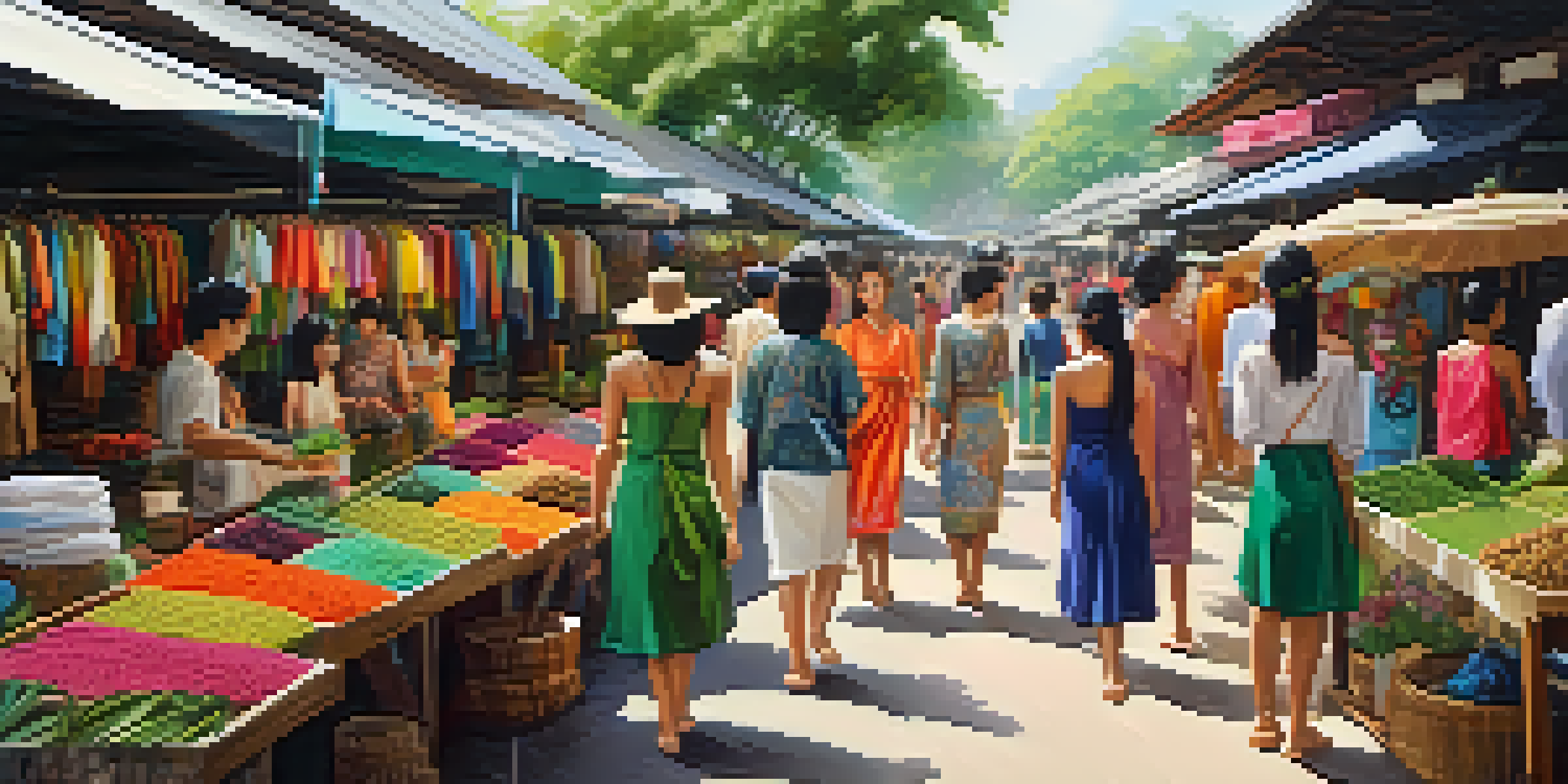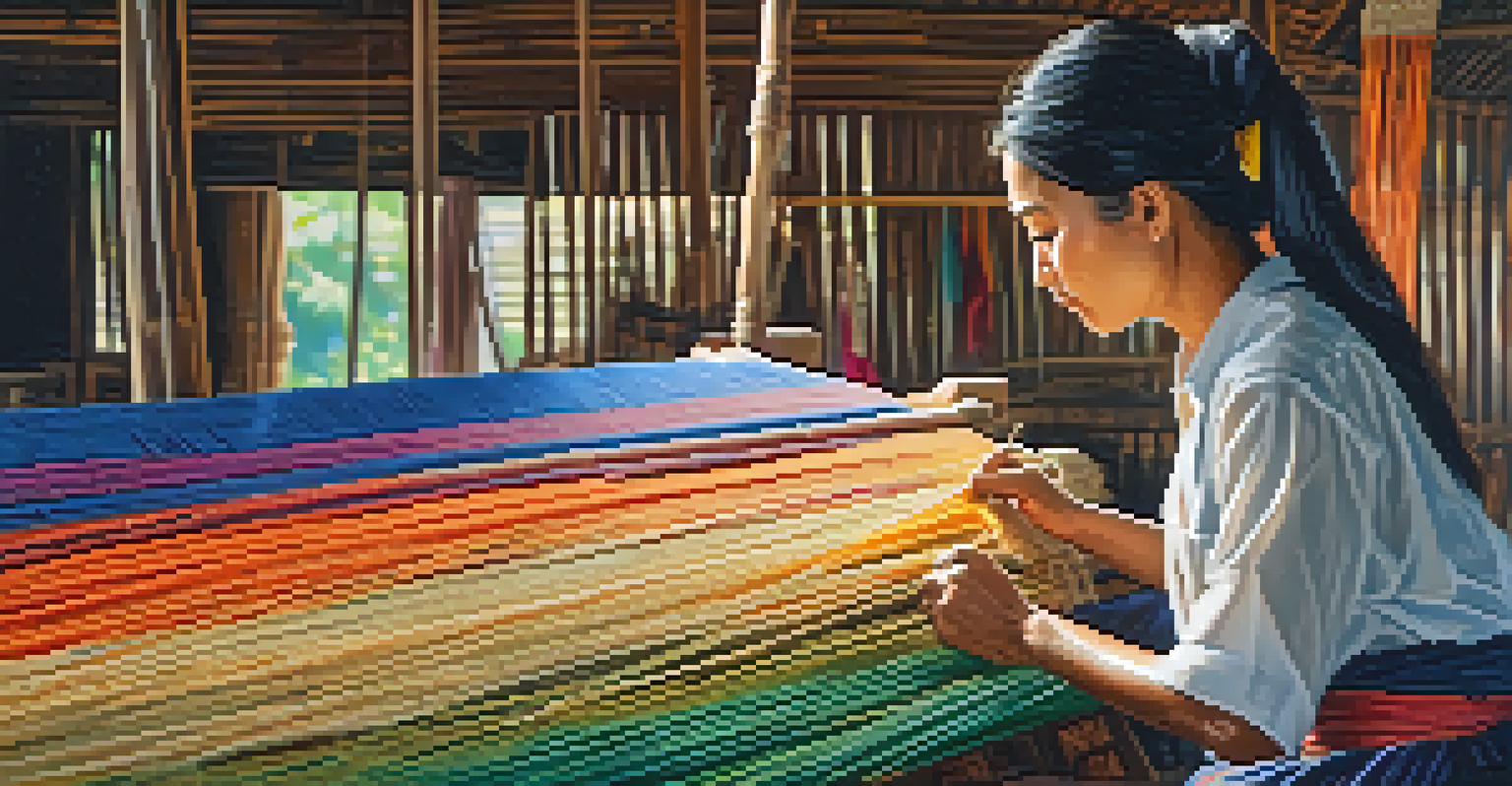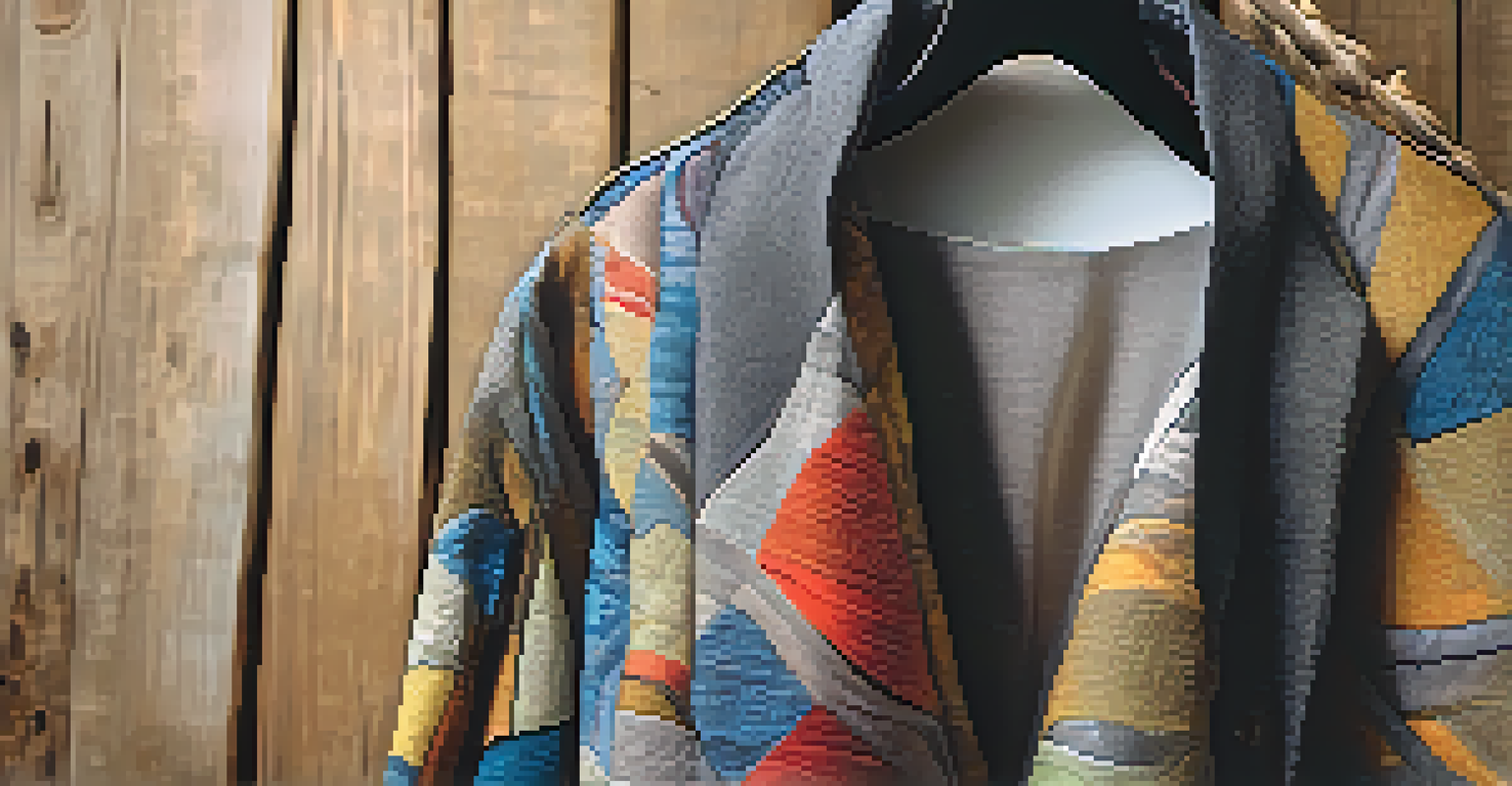Local Designers Leading the Sustainable Fashion Movement in Thailand

The Rise of Sustainable Fashion in Thailand
In recent years, Thailand has emerged as a hub for sustainable fashion, with local designers leading the charge. This movement is a response to the global call for more eco-friendly practices in the fashion industry. Many consumers are now prioritizing sustainability, seeking out brands that align with their values and ethical beliefs.
We don’t need to engage in grand, heroic actions to participate in change. Small acts, when multiplied by millions of people, can transform the world.
As a result, designers in Thailand are creatively blending traditional craftsmanship with sustainable practices. They are using local materials, reducing waste, and focusing on fair labor practices. This shift not only supports the environment but also empowers local communities and artisans.
The rise of social media has further amplified this movement, allowing these designers to share their stories and connect with a global audience. With a growing number of consumers interested in sustainable choices, the future of fashion in Thailand is looking brighter than ever.
Meet the Trailblazers of Sustainable Design
Several local designers in Thailand are making waves with their innovative approaches to sustainable fashion. One standout is a designer who repurposes discarded materials into stylish garments, showcasing how creativity can transform waste into wearable art. This not only helps the environment but also challenges conventional views on fashion consumption.

Another notable designer focuses on using organic fabrics and natural dyes, emphasizing the importance of transparency in the supply chain. By sourcing materials responsibly, they promote an eco-conscious mindset among consumers. Their work serves as an inspiration for others in the industry looking to make a difference.
Sustainable Fashion Gains Momentum
Thailand is becoming a leader in sustainable fashion as local designers merge traditional craftsmanship with eco-friendly practices.
These trailblazers are not just creating beautiful clothing; they are also educating the public about the importance of sustainable practices. Through workshops and collaborations, they share their knowledge, encouraging others to think critically about their fashion choices.
The Role of Traditional Craftsmanship
Thailand's rich cultural heritage is a treasure trove of traditional craftsmanship, which many designers are now incorporating into their sustainable practices. Handwoven textiles, intricate embroidery, and age-old dyeing techniques are being revitalized in contemporary fashion. This not only preserves these skills but also adds a unique touch to modern designs.
Fashion is the armor to survive the reality of everyday life.
By merging traditional techniques with sustainable materials, designers are creating pieces that tell a story. Each garment becomes a beautiful representation of both culture and environmental responsibility. This approach not only honors the past but also sets a foundation for future generations.
Moreover, supporting local artisans helps sustain communities and keeps traditional crafts alive. As consumers become more aware of the origins of their clothing, the appeal of garments that celebrate Thai heritage continues to grow.
Challenges Facing Sustainable Fashion in Thailand
Despite the progress, the sustainable fashion movement in Thailand faces several challenges. One significant hurdle is the higher cost of sustainable materials and ethical production methods. Many consumers still prioritize affordability over sustainability, which can deter designers from adopting eco-friendly practices.
Additionally, awareness and education about sustainable fashion are still in their infancy. While the movement is gaining traction, many consumers remain unaware of the impact of their choices. This gap highlights the need for ongoing education and outreach efforts.
Consumer Awareness is Key
Educating consumers about the impact of their fashion choices is vital for driving demand for sustainable practices in the industry.
Lastly, the fast fashion industry continues to exert pressure on local designers. Competing with mass-produced items can be daunting, but the unique value of sustainable fashion lies in its story and ethical foundation. Overcoming these challenges requires collaboration within the industry and support from consumers.
The Importance of Consumer Education
Consumer education plays a crucial role in the success of sustainable fashion in Thailand. Understanding the impact of clothing production on the environment can empower individuals to make more conscious choices. This awareness can lead to a shift in purchasing habits, favoring brands that prioritize sustainability.
Designers and brands are increasingly taking the initiative to educate their customers about sustainable practices. They are sharing information through social media campaigns, workshops, and storytelling, highlighting the importance of supporting local artisans and eco-friendly materials. These efforts help demystify sustainable fashion and ignite a passion for responsible consumption.
Ultimately, the more informed consumers are, the stronger the demand for sustainable fashion will become. This change in mindset can drive the industry toward more ethical practices, creating a positive ripple effect throughout the fashion ecosystem.
The Impact of Global Trends on Local Designers
Global trends significantly influence local designers in Thailand, especially in the realm of sustainable fashion. As international brands adopt eco-friendly practices, local designers find inspiration and motivation to innovate. This cross-pollination of ideas fosters creativity and encourages a more collaborative approach to fashion.
Moreover, the growing global awareness of climate change and environmental issues has made sustainability a priority for many consumers worldwide. Local designers are keen to tap into this trend, showcasing their commitment to sustainability and ethical practices. By doing so, they can attract both local and international markets.
Collaboration Enhances Impact
Collaborations between designers, artisans, and communities are essential for addressing environmental challenges and promoting sustainable fashion.
However, it's essential for local designers to maintain their unique identity while embracing global trends. Striking this balance allows them to stand out in a competitive market while remaining true to their roots and values.
Future Prospects for Sustainable Fashion in Thailand
The future of sustainable fashion in Thailand looks promising, with a growing community of designers committed to eco-friendly practices. As consumer demand continues to rise, more brands are likely to emerge, focusing on sustainability and ethical production. This trend reflects a broader global movement toward conscious consumption.
Additionally, collaborations between designers, artisans, and local communities can enhance the impact of sustainable fashion. By working together, they can create innovative solutions that address environmental and social challenges. This collective effort can amplify their message and reach a wider audience.

Ultimately, as Thailand's fashion landscape evolves, the emphasis on sustainability will likely become a defining characteristic. With the support of consumers, designers, and the industry as a whole, the sustainable fashion movement in Thailand can thrive and lead by example on the global stage.
How to Support Sustainable Fashion in Thailand
Supporting sustainable fashion in Thailand is easier than you might think. Start by seeking out local designers who prioritize eco-friendly practices. Whether it's through shopping at local markets, boutiques, or online stores, your choices can contribute to a more sustainable fashion ecosystem.
Another way to support this movement is by educating yourself and others about the importance of sustainability in fashion. Share your knowledge with friends and family, and encourage them to consider their fashion choices. The more people who are aware, the stronger the demand for sustainable options will become.
Lastly, consider participating in or attending events that promote sustainable fashion, such as workshops, fashion shows, or community gatherings. These events help build awareness and foster a sense of community among those passionate about sustainability. Together, we can all play a role in shaping a more responsible fashion industry in Thailand.